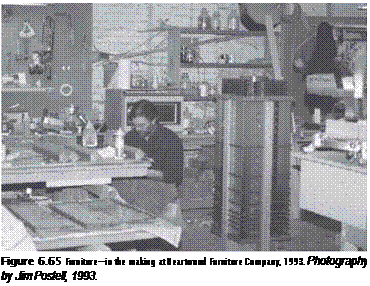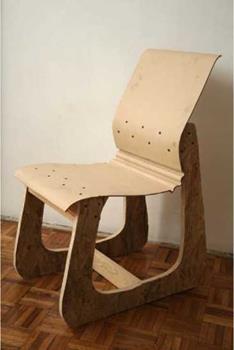At this point in the design process, the significance of a good working relationship between designer and fabricator will become apparent. Designers can observe the fabrication process but generally do not supervise it, unless the designer is offering a design/build service to the
|
Figure 6.61 Emiliano Godoy preparing a two-part wood form. Courtesy of Emiliano Godoy. Credit: Erika Hanson, 2005.

 |
 |
 |
client. Nonetheless, observation of the fabrication phase is an important responsibility of the furniture designer. Generally, designers spend between 30 and 35 percent of their total time on this phase of work.18 When the scope of work is modified, the fabricator will invoice the client for the additional time and material.
The designer’s role during this phase is to observe and monitor the process, describe the process to the client, and assist in problem resolution as issues arise. It is important to underscore that observing the fabrication is not supervising the work. Supervision would imply responsibility for the work and create liability for the designer should problems occur. Designers are responsible for the design, fabricators are responsible for the means and methods of fabrication, and clients are responsible for approvals and payment (Figure 6.65).



